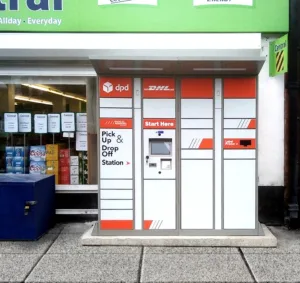By Adam Fulford, Chief Customer Officer at digital and data consultancy Engine UK
Tesco’s launch of its first checkout-less store is a UK retail milestone. Cameras and weight sensors track your movements in-store and the contents of your basket, payment is made automatically before you leave the store.
Whilst not the first of its kind (Amazon Fresh opened a till-less store back in March this year) the trial by the largest supermarket in the UK is notable for its potential scale. If successful this will be rolled out further across Tesco’s store portfolio, a potential 4,008 stores.
It comes at a time when many retailers are exploring innovations in their physical retail space. Nisa’s trial of AR voucher redemption on certain products and the Body Shop’s partnership with Instacart in the US and Canada are further evidence that retailers are looking to enhance the offering by converging the physical and digital spaces.
Unlocking customer data.
For Tesco this isn’t just about cost savings and speed of checkout. It closes the loop in terms of data, driving significantly more of their 18M Clubcard members to register and use the app, unlocking a chunk of personal data on millions of people.
According to security firm Clario, Tesco’s app captures 35.9% of the personal data available to apps, ranking it 8th overall, the highest of any supermarket. Much of this data is to be expected; name, age, contact and bank details for example. Crucially though it allows Tesco to access information such as marital status, interests, and information from social profiles such as friends and hobbies. Allowing for a fuller customer profile to be gathered and built.
Such targeting richness is incredibly powerful for both Tesco itself, and its partners. It’s the latest move in the data arms race, being fought increasingly by brands in response to changes in third party cookie laws that place Google, Facebook and Apple platforms firmly in control of audience targeting data.
Reward with relevance.
Curating the customer experience is critical for most brands if they want to reap the rewards of data without alienating their most loyal customers.
The ability to target with greater relevance has the power to shift the relationship between Tesco and its Clubcard members from one based on bought loyalty to one powered by greater relevance and convenience.
As with the launch of Boots Media Group last month, success will depend on the quality of experience that all this data creates. Handled well it could create rich, personal relationships at scale. Handle it poorly and customers could feel that their data has been abused and turned into spam at scale.
As well as innovating in the ‘phygital’ experience, Tesco needs to decide what kind of brand they want to be in a data rich future. The rules by which they operate, codifying their brand behaviour in an algorithm driven world.
Leverage the power of trust.
For most customers, the idea that they might be sharing this data with Tesco would be repellent. The fact that people don’t think twice demonstrates the power of creating genuine value in the customer experience. In exchange for speed and convenience we’ll tell people who our friends are and what we get up to at the weekend.
Personally, I believe there’s something more to it than that. The power in the experience isn’t merely convenience, it’s a warmth towards the brand conveyed by the trust it shows in you by allowing you to just walk out the door.
It’s the same trust shown by Amazon’s no quibble returns policy (I once phoned to be refunded halfway through enduring Wonder Woman 1984, don’t judge), or Ocado allowing you to just reschedule a delivery if you’ve not made it home in time.
It’s a simple reflection that your custom with us is more important than anything else. As retailers wrestle to redefine the in-store experience, connecting data and brand they would be wise to consider how what they know about customers could help them show trust as well as drive performance.
We’re not all shoplifters after-all…







